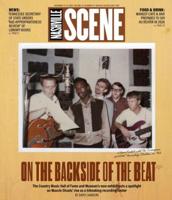As far as art forms go, the visual arts never have been Nashville’s strong point. Our history in the literary arts, meanwhile, is quite distinguished. The New Critics occupied a beachhead in the Vanderbilt University English department with the so-called Fugitive writers. Their influence is still felt today. And in the musical arts, it’s almost not worth saying that the city’s country music industry has brought Nashville considerable cultural acclaim.
But regarding the visual arts, the city has been somewhat of a blank canvas. There are exceptions, of course, such as the sizable collection of artworks at Fisk University. Unfortunately, the city’s affluent classes here have never bought much challenging art. Our city’s painters and sculptors, therefore, have never had many patrons willing to buy their products. And, as a result, the visual arts have been placed at about the same intellectual level as topiaries, silver candelabras, and nice table settings.
Now, all is changed—utterly changed.
The Frist Center for the Visual Arts, which formally opened this weekend, is one of the more far-reaching developments in the city’s arts community and the city as a whole. One of the basic goals of the Thomas Frist Jr. family, which founded the center, is that the institution extend outward, not inward, and bring through its doors common men and women so they might develop an appreciation of art. We have no doubt that it will be successful in developing that appreciation. We feel the center will help improve the visual arts scene here in this city. And we are confident that the museum will change the way the city looks at itself.
Nashville has often been a place far too willing to shortchange itself. That’s a nice way of saying that we’re much too cheap. On any number of municipal investments, we have chosen to penny-ante our way to mediocrity—education, capital projects, or even sidewalks. Our taxes are, all things considered, amazingly low. And our philanthropists, while often kind, haven’t exactly blown this city into another dimension.
The Frist family, with public assistance and a number of other considerable donations from various contributors, has written big checks and built a superb, first-class arts space that not only provides a badly needed new home for art, but also redefines where the bar in this city should be. In the sphere of civic navel gazing, the Frists have given notice about what this city should aspire to. They have stated that the arts are as important a civic measurement as professional sports. In the process, they have provided the long-suffering visual arts community with a cultural home. And we should all feel fortunate.
In coming years, the real influence of the Frist Center for the Visual Arts will be felt when a mayor, or another philanthropist, proposes the city build some new civic structure. At that point, all eyes will return to the Frist Center, because it embodies so much that can be done right.




